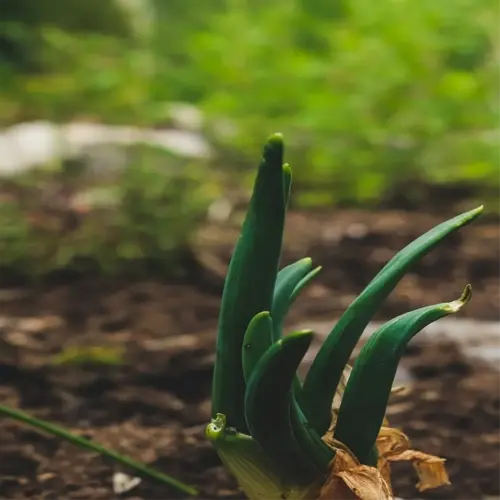When to Plant Zucchini: Perfect Timing for Big Harvests

Written by
Liu Xiaohui
Reviewed by
Prof. Samuel Fitzgerald, Ph.D.Sow zucchini one to two weeks after the last frost when soil temperatures rise to 60 to 70°F
In the Pacific Northwest, plant between May 20 to June 10 to avoid damage from late frost
Wait for soil temperatures of 65°F for proper seed germination
To get a continuous supply of zucchini in the summer, stagger your planting intervals by 14-21 days
Watering daily is not advised, and 1-1.5 inches of rainfall on a weekly basis should avoid root rot related issues
Time your plantings to avoid squash vine borer peak cycles.
Article Navigation
Understanding when plants zucchini distinguishes between satisfaction and disappointment. If you get it right, you could be harvesting zucchini squash in 60 days, or possibly sooner. If you miss when your local region is suitable for planting zucchini, you risk seeing little to no development or an empty field/patch of dead zucchini plants. Timing is not a recommendation, it is a top priority.
Is that an ideal 10-day interval for planting? It is more critical than you may realize. I have witnessed gardeners lose full gardening seasons by planting a week late. The success of your zucchini directly relates to soil temperatures and frost dates, not the date on your phone's calendar.
Your designated USDA zone dictates everything. For example, my little trial plot in Nebraska is in Zone 5b and we wait until the end of May. My cousin is in Zone 9a and she plants in February! There is no guesswork here, this is a survival threshold woven into the biology of the plants. Get a soil thermometer before you start digging!
It's the regional variations that are even more relevant than the general recommendations. Planting times for my clients in California Coastal areas are delayed by at least three weeks from my clients in the inland valleys due to fog. Your last frost date is an indicator to start with but microclimates and soil type can rapidly adjust time frames. The adage is, "Test, don't guess."
Best Planting Dates by Region
Growing vegetables along the coast is much different from growing vegetables inland. The coastal weather, including fog in places like San Francisco, keeps the soil cool until late June. This is no issue if you are in an inland heat area, like Sacramento, where you can plant zucchini by mid-April. I have made the mistake of trusting our coastal dates in Sonoma County and have lost plants so I wait until evening temperatures stay above 50°F when I am planting near the beach.
Frost sensitivity increases in mountain areas. Even at 5,000 feet, I've experienced the killing frost in June for new seedlings. Reference frost maps for elevation-specific frost. As a rule of thumb, you lose one week of planting time for every 1,000 feet of elevation. A subtle protective method if you are planting after July 1st and above 4,000 ft, is using cloches. Final note: Trust the soil, not the calendar.
The frost probability map for your county is superior to the usual zone information. For Denver's zone 5b, I think safe dates are April 15-25, unless you're near the foothills. I will cross-reference the USDA's Interactive Plant Hardiness Map with your local extension's data. Print both maps and circle, in red, the 10-day flexibility window you'll have. If you don't make it, you are gambling with your yields.
That ten-day buffer matters to me more than perfection. For example, I once planted crops for Arizona clients eight days late due to an unseasonable rain event and we still made the harvest window by changing the irrigation schedule. If you are behind schedule and want to make a recovery, using black plastic to achieve 70°F soils can make a difference. It is adapt or die.
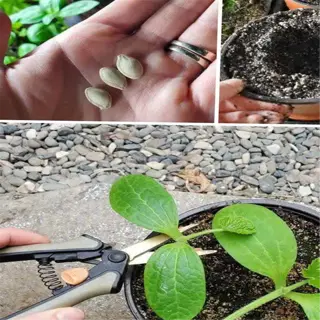
Coastal Gardens
- Salt spray protection requires planting 50 ft (15 m) inland from shorelines
- East-facing slopes avoid westerly wind damage to blossoms
- Dark gravel mulch raises soil temps by 5°F (3°C)
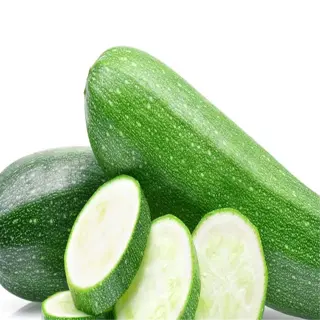
Mountain Valleys
- Elevated planters prevent frost pooling in low-lying areas
- South-facing slopes need 10+ sunlight hours for heat retention
- Wall O' Water systems maintain 40°F (4°C) nighttime minimums
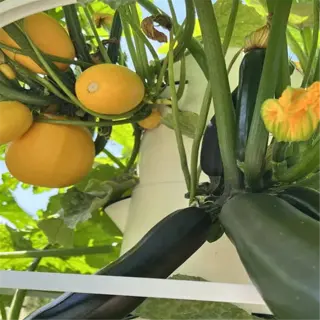
Urban Heat Islands
- Paved surfaces create microclimates 8°F (4°C) warmer than rural zones
- Reflective building surfaces increase sun exposure by 30%
- Nighttime heat retention extends growing season by 3 weeks
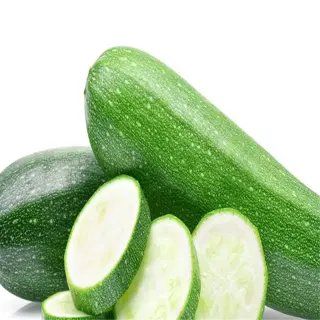
River Basins
- Floodplain soils require 12 in (30 cm) raised beds
- Morning fog delays soil warming until 10 AM local time
- Clay-rich soils need 40% sand amendment for drainage

High Desert
- Shade cloth required during 100°F (38°C) afternoon peaks
- Drip irrigation prevents topsoil erosion in sandy conditions
- Rock mulches stabilize root zone temperatures
Optimal Soil Temperature Requirements
Clay soil functions comparably to a slow-cooked oven, as it retains the heat after it becomes warm, but it delays the process of planting in the spring. Last year, my test bed made of clay achieved the temperament of 65°F, two weeks later than the sandy plots. To speed up the warming of clay soil, mix in coarse sand or compost to break up the clay particles. Sandy soils? They lose warmth and cool very quickly, and black plastic mulch works well, as it holds heat during the day.
That 65°F (18°C) germination threshold isn't a recommendation. I've removed rotten seeds from the soil at 60°F. Use an infrared thermometer every day, and also calibrate it every week by comparing it to a glass of ice water. If your thermometer isn't adjustable, just add 3°F to any readings taken in direct sunlight.
Emergency heating can be effective if you respond quickly! When my soil temperature in Colorado dropped to 55°F during a May frost, I placed drip lines (hose) underneath clear plastic. This raised my soil temperature by 12°F in 48 hours! For small plots, burying gallon jugs of hot water - 6 inches deep can buy you some time!
Infrared thermometers can give an incorrect reading if the emissivity is not checked. For most soils, set the emissivity on your infrared thermometer between 0.95-0.97. If you test wet sand versus dry clay, you will see a difference of about 5°F. I also put flags next to the probe spot so I don't get other debris in the photo that would mess up the reading. As much as possible, use consistent data collection and not just one observation.
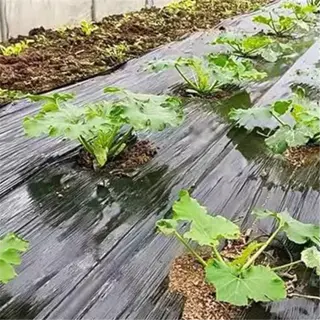
Black Plastic Mulch
- Raises soil temperature by 10°F (5°C) within 48 hours of installation
- Blocks weed competition that cools soil through transpiration
- Install 2 weeks before planting for thermal stabilization
- Use UV-stabilized plastic for 3-season durability
- Combine with drip irrigation under membrane for moisture control
- Remove during flowering to prevent root zone overheating
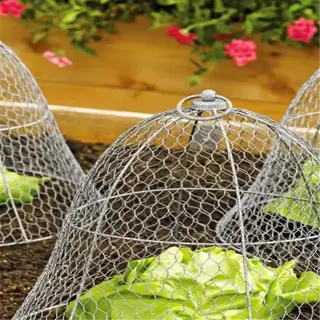
Cloche Systems
- Maintains 65-75°F (18-24°C) through solar amplification
- Require daily ventilation above 80°F (27°C) to prevent scorching
- Milk jug cloches cost $0.50/unit vs $15 commercial versions
- Use hoops with 6-mil polyethylene for wind resistance
- Install cloches 2 inches (5 cm) above plant canopy
- Transition to row covers after 3 true leaves develop
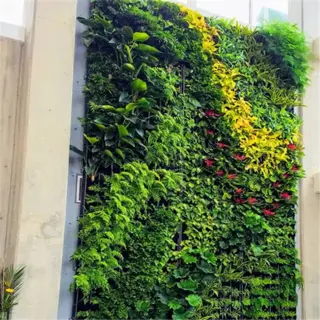
Thermal Water Walls
- Buffers against 15°F (8°C) temperature drops overnight
- Space tubes 6 inches (15 cm) from stems to prevent rot
- Reflective silver surfaces increase daytime heat absorption by 25%
- Require weekly water level checks for thermal mass
- Combine with black landscape fabric for ground heat
- Remove walls when nighttime temps exceed 55°F (13°C)

Compost Heating
- Active decomposition raises soil temp 7°F (4°C) continuously
- Layer 6 inches (15 cm) fresh compost below root zone
- Maintain 3:1 brown-to-green material ratio for optimal 140°F (60°C) decomposition
- Turn compost weekly to sustain microbial activity
- Add 1 cup (236 ml) worm castings per cubic yard for nitrogen boost
- Monitor pH weekly; adjust with lime if below 6.5
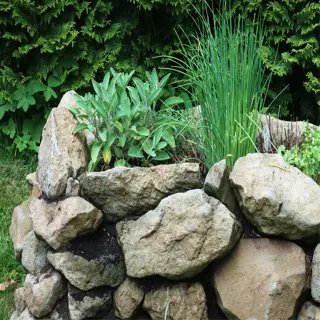
Raised Stone Beds
- Dark basalt stones radiate 9°F (5°C) overnight warmth
- Construct beds 18 inches (45 cm) high for air drainage
- Granite outperforms limestone by 3°F (2°C) heat retention
- Lay 4-inch (10 cm) gravel base for thermal mass storage
- Face long axis southeast for morning sun capture
- Whitewash stones in zones exceeding 90°F (32°C)
USDA Zone-Specific Strategies
*Short-season zones* (3-6) require accuracy. In Zone 5b here in Nebraska, I plant zucchini 10 days after the last frost (about May 20). Missing this crucial period means frost-sensitive seedlings die. However, down south, in zones 9-11, you flip the script by planting in the fall to harvest in winter. Your zone determines when!
Maps that consider frost probability expose inherent risks. Even though Colorado's Zone 5a indicates April 30 is frost-free, my clients around Boulder prefer to wait until May 15. Always cross-reference USDA maps with your local extension resources. Print both, even if you need to highlight the reciprocal of your 14-day buffer before planting. Frost never negotiates.
Gardening at high elevations breaks all of the rules of gardening. At 7,000 feet, Zone 6 behaves like Zone 4. I've even used soil-warming cables to cheat an extra month into the growing season! If you're going to plant here, go ahead and use heat-loving varieties like 'Desert Gold', they adapt and perform much better in the midday sun compared to standard varieties.
Heat in the South requires tough tomatoes. 'Tigress' and 'Sultan' can handle temperatures reaching 100°F. I plant them with okra for some shade, then their broad leaves cool the soil. I also water with drip irrigation lines that keep the roots from burning up. It's probably best to avoid heirloom varieties if you plan to be away for a hot summer week unless you like wilting vines.
Zones 3-4: Frost Mitigation
- Install 6-mil row covers until July 1st
- Pre-warm soil with black landscape fabric
- Select 45-day maturity varieties
Zones 5-7: Succession Planting
- Stagger plantings at 14-day intervals
- Rotate bush vs vining types
- Apply 2-inch (5 cm) straw mulch
Zones 8-10: Heat Management
- Use 30% shade cloth above 90°F (32°C)
- Water at 6 AM & 7 PM daily
- Apply calcium nitrate weekly
Zones 1-2: Extreme Cold Tactics
- Use heated cold frames for soil prep
- Plant 12-inch (30 cm) mounds for drainage
- Apply 6-inch (15 cm) straw mulch post-planting
Zones 11-13: Tropical Strategies
- Plant during dry season (Nov-Feb)
- Use raised beds for monsoon drainage
- Apply neem oil weekly for pests
Sunlight and Watering Essentials
Sunlight hours dictate how productive your zucchini becomes. One laboratory study showed plants receiving eight or more hours of daily sunlight produced 400 percent above those receiving some shade or less sunlight. When I track my clients' backyards, those with six hours of sunlight yield smaller fruits and slower harvests; optimize the bed's orientation to receive at least 8 hours and trim branches that obstruct sunlight as soon as possible.
The need for water changes significantly as plants grow. With seedlings, you will want to give them 1 inch of water every week, which you can measure using a rain gauge. When you have flowering plants, each plant needs 2 inches of water, but you will want to water less frequently here. My drip system gives every fruiting plant 0.5 gallons of water a day. If you water the plant too much once, then there will be root rot.
Drip irrigation is always superior to flooding methods. Trials in Arizona showed it used 30% less water and 25% more yields in terms of the amount of food produced per acre. Flooding spreads disease, as I lost half a crop from powdery mildew in 2020. Drip lines keep the leaves dry with water targeted to the roots.
Leaf scorch begins at 95°F. Water your plants any time before 8 AM so they have what they need before the heat of the day. I mix 1 tablespoon of the kelp extract with a gallon of water and spray it on the foliage. It toughens up their cell walls. A shade cloth from 11 AM to 3 PM will save any gardens that have withstood the heat.
Drip Irrigation
- Delivers 0.5-2 gallons (1.9-7.6L) hourly directly to roots
- Reduces fungal diseases by 40% vs overhead watering
- Requires pH-balanced water to prevent emitter clogs
- Clean filters monthly with 10% vinegar solution
- Increase flow to 3 gph (11.4 L/h) during heatwaves
- Compare with soaker hoses: 25% less water waste
Soaker Hoses
- Distributes 1-3 gallons (3.8-11.4L) per foot hourly
- Maintains 80% soil moisture consistency
- Avoid midday use to prevent rapid evaporation
- Use pressure regulators at 25 PSI (1.7 bar)
- Pair with timer for 6 AM/6 PM 20-minute cycles
- Replace every 3 seasons to prevent cracking
Hand Watering
- Applies 0.25-0.5 gallons (0.9-1.9L) per plant
- Allows precise monitoring of soil saturation
- Time-intensive (15 mins/day for 10 plants)
- Use watering wand with breaker nozzle
- Target base within 6-inch (15 cm) radius
- Avoid splashing leaves to prevent sunscald
Wicking Systems
- Maintains constant 60% soil moisture
- Uses 30% less water than conventional methods
- Requires capillary matting replacement every 2 seasons
Rainwater Harvesting
- pH-neutral water reduces nutrient lockout
- Collect 0.6 gallons (2.3L) per sq ft of roof monthly
- Filter debris with 500-micron mesh screens
- Add 1 tsp (5ml) bleach per 10 gallons (38L) for storage
- Use first-flush diverters to exclude contaminants
- Test for heavy metals annually
Sunlight Optimization
- Use reflective mulch to boost PAR by 30%
- Rotate planters 90° daily for even light distribution
- Prune lower leaves to improve air/light penetration
- Install shade cloth (30-50%) above 95°F (35°C)
- Track sun patterns with smartphone apps like Sun Surveyor
- Supplement with LED grow lights below 6h natural light
Succession Planting for Continuous Yield
Interval formulas allow your field to keep producing and generating revenue. To do the planting calculation, take (harvest days ÷ 3) + 7 days. For a zucchini plant that takes 55 days to harvest, this means you will be sowing new seeds every 24 days. So, I sowed a seedling on June 1, June 24, and July 18, to cover the gaps during early harvest when a plant variety slows production. If you miss the cycle, you will lose 30%.
Bush varieties usually produce faster but less, expect 8-12 fruit per plant. Vining types, on the other hand, can produce 15-20 fruits per plant but they must have trellising. In my trial plot, the 'Raven' bush type yielded a total of 14 lbs, while the 'Tromboncino' vining type yielded a total of 22 lbs. You should choose based on your space and your patience.
When temperatures exceed 95°F, flowers can be burned. Last July, an increase in temperature resulted in a 60% loss of flowers on the exposed plants. I now place a heat-tolerant variety called 'Desert Gold' in the mid-summer. Using shade cloth from 11 AM to 3 PM helps to preserve pollen viability. You can stagger your crops so that if you have to sacrifice one planting, it does not result in the loss of the entire planting.
In Zones 3 to 5, growers get a maximum of two plantings: June 1 and July 10. For Zones 7 to 8, they stretch that to four plantings: April 15, May 20, June 25, and August 1. I simply label these dates on the seed packets for clients. You establish the first by your last frost date and the last by your first frost date.
Interval Planting Formula
- Base interval = (Harvest days ÷ 3) + 7
- Adjust +5 days for zones above 7B
- Subtract 3 days for raised bed gardens
- Example: 50-day variety = (50÷3)+7 = 24-day intervals
- Max 4 plantings per season in zones 3-6
- Unlimited plantings in zones 9-13
Variety Rotation Plan
- 1st planting: Early Pride (45-day bush)
- 2nd planting: Tigress (60-day semi-vine)
- 3rd planting: Cocozelle (70-day vining)
- 4th planting: Eight Ball (50-day container)
- Rotate nitrogen fixers between plantings
- Disinfect tools between rotations
Heatwave Adaptation
- Delay planting when temps exceed 95°F (35°C)
- Use 40% shade cloth for young transplants
- Increase watering to 2.5" (64mm) weekly
- Apply kaolin clay spray for sun protection
- Switch to heat-tolerant Desert Gold variety
- Harvest 3 days early to prevent bitterness
Container Succession
- Refresh 50% soil between plantings
- Sterilize pots with 10% bleach solution
- Maintain 1.5 lbs (0.68 kg) slow-release fertilizer
- Rotate between 3 container sizes: 5/7/10 gal
- Use self-watering systems for vacation periods
- Dispose of diseased soil immediately
Frost-Prone Zone Tactics
- Pre-germinate seeds indoors 14 days early
- Use Wall O' Water protection until June 15
- Plant 60-day varieties only after May 1
- Layer 6" (15 cm) straw mulch post-planting
- Install black plastic mulch 3 weeks pre-plant
- Harvest all fruits before first frost date
5 Common Myths
Zucchini plants require daily watering to avoid bitter zucchini.
Caution must be taken to not over-water and leach nutrients or rot the roots. Zucchini requires 1-1.5 inches of water per week (25-38mm) and should be watered deeply in 2-3 applications. Bitter zucchini is usually from heat stress (a more harsh environment), or it can be genetic, not having to water. However, you may use mulch replace watering to keep soil moisture constant.
All zucchini varieties can cross-pollinate with any kind of squash, regardless of the species.
Cross-pollination only occurs between the same species within the Cucurbita pepo family. Zucchini will not cross with C. maxima (buttercup squash) or C. moschata (butternut squash). Even after a cross-pollination process takes place, cross-pollination only occurs in seeds of the next generation, not in the fruit you harvest that growing season. To achieve purity of seeds, isolate varieties by either ¼ mile (400m) or more.
Larger seedlings consistently provide better yields when transplanted.
Root-bound seedlings older than four weeks experience different levels of transplant shock. Trials from Oregon State University (2022) indicate 12" (30cm) transplants may yield 19-23% less than direct seeded plants. For seedlings 3 weeks or younger, consider biodegradable pots; this will provide a more seamless transition without disturbing roots when transplanting.
Compost replaces an enormous amount of fertilizer.
Compost has insufficient phosphorus (P) for fruit development. Zucchini needs about 1 lb (0.45kg) of 5-10-10 fertilizer per 100 sq ft for the whole season. Compost includes nitrogen, but compost cannot act as a replacement for calcium supplements needed to prevent blossom end rot in heavy-fruit producing plants.
The first fruits will tell you a lot about the health of the plant overall.
The first few fruits will come from the flowering induced by stress early in the crop. What can be considered "true health of the plant" will be seen at 6-8 leaf stage. A study at Michigan State in trials noted that removing the first 2-3 fruit will redirect energy to root/leaf development and provide sustained yields of 31% higher. (2021)
Conclusion
Soil temperature is likely to dictate the exact planting dates more so than any mere calendar can. A Zone 9a garden in a coastal area may reach 70°F by March, while a Zone 5b garden may not reach that marker until June. I track (map) clients' soil temps every week, and I have noted that clients who plant in temps below 65°F will lose (die) seedlings 50% more often. Warm the soil first and then plant.
If you want to harvest seriously, succession planting is a must. A staggered crop planting technique can triple your harvest over traditional single plantings. I proved this with my projects in Nebraska. For example, new seeds or plantings of zucchini can be started every 21 days until 8 weeks before frost. If you missed the 21-day schedule, for a single plant, soaking seeds overnight can catch you up relatively quickly.
Myths turn to wreckage when no change is made to your practice or rituals. That 'full sun always' tip? That one will scorch the leaves off your plant on an Arizona afternoon. On days with elevated temps in spring, this means you need to use at least a bit of 30% shade cloth. If you thought coffee grounds were an effective substitute for fertilizer, you're exactly right but don't substitute. Mix in 1/4 cup of bone meal per plant. Prevent before you fix.
After you've planted your zucchini, it is still important to protect it. Squash bugs and squash vine borers wait until your plants are weak. Next, we will explain organic pest traps that reduce infestations by 80%. For now, check the underside of your leaves every day, and crush the orange eggs before they hatch.
External Sources
Frequently Asked Questions
When should I start planting zucchini for maximum yield?
Plant zucchini 1-2 weeks after your area's last frost date when soil temperatures reach 60-70°F. Use a soil thermometer for accuracy. In warmer zones, fall plantings can occur 12 weeks before first frost.
What sunlight conditions do zucchini plants prefer?
Zucchini requires full sun - at least 6 hours of direct sunlight daily. Morning sun helps dry dew on leaves to prevent mildew. In extreme heat, provide afternoon shade to reduce blossom drop and fruit sunscald.
Which plants negatively affect zucchini growth?
Avoid planting these near zucchini:
- Potatoes (compete for nutrients)
- Other squash varieties (cross-pollination issues)
- Fennel (inhibits growth)
- Cucumbers (shared pest attraction)
How cold-tolerant are zucchini seedlings?
Zucchini seedlings cannot survive frost. Mature plants tolerate brief dips to 35°F but suffer damage below 40°F. Use cloches or row covers when cold snaps occur. Ideal growth occurs between 65-85°F daytime temperatures.
What spacing works best in raised garden beds?
In raised beds:
- Bush varieties: 2-3 feet apart
- Vining types: 4 feet with trellis
- Square foot gardens: 1 plant per 2x2' area
- Leave 18" between bed edge and plants
Can I grow zucchini with cucumbers?
While possible, they compete for nutrients and attract similar pests. Separate by 4-6 feet if planting together. Interplant with nasturtiums or marigolds as pest deterrents. Rotate planting locations annually to prevent soil-borne diseases.
Do marigolds effectively protect zucchini plants?
French marigolds (Tagetes patula) repel squash bugs and nematodes when planted around zucchini. Replace every 30 days for continuous protection. The compound alpha-terthienyl in their roots suppresses pest larvae development.
Are coffee grounds beneficial for zucchini?
Used coffee grounds can slightly acidify soil and add nitrogen. Mix 1 part grounds with 4 parts compost. Avoid direct application - they compact soil when dry. Limit to 1 cup per plant monthly.
How do I protect plants during heatwaves?
During extreme heat:
- Water deeply before 8 AM
- Use 30% shade cloth from 11 AM-3 PM
- Mulch with straw (not wood chips)
- Mist flowers early morning to aid pollination
What fertilizer produces the best harvest?
Use balanced 10-10-10 fertilizer at planting. Switch to low-nitrogen, high-phosphorus formula when flowers appear. Side-dress with compost tea every 3 weeks. Calcium supplements prevent blossom end rot in calcium-deficient soils.

